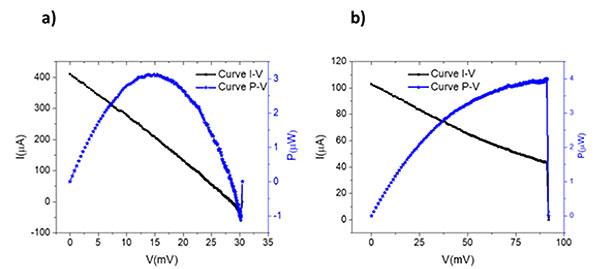A team from Universidad Autonoma de San Luis Potosí and Tecnologico Nacional de Mexico compared 9 × 9 arrays of bimetallic (nickel and platinum) nanoantennas for a classic and evolutive dipole configuration. The researchers fabricated the nanoantennas using e-beam lithography and characterized them using a solar simulator to analyze the I-V curves. Using these curves, they were able to observe thermoelectric voltage dependence associated with both classic and evolutive dipole configurations.
According to the team, the evolutive configuration was 1.3× more efficient than its classical counterpart. The results were corroborated by absorbance of these nanoantennas in the 20 to 36 THz range, where EDN was found to be 40% more efficient than CDN. In the range of 36.1 to 90 THz, EDN was found to be 30% more efficient. The experimental results matched the thermoelectric behavior obtained using numerical simulations, suggesting that EDN arrays could be good candidates for the harvesting of waste heat energy.
 I-V curves. CDN: Ni-Pt, current in function of voltage (black line) and the electrical potential in 225 function of voltage (blue line) (a). EDN: Ni-Pt, current in function of voltage (black line) and the electrical 226 potential in function of voltage (blue line) (b). Courtesy of Javier Mendez-Lozoya et al.
The researched was published in the Journal of Nanophotonics, a SPIE publication (https://doi.org/10.1117/1.JNP.13.026005).
I-V curves. CDN: Ni-Pt, current in function of voltage (black line) and the electrical potential in 225 function of voltage (blue line) (a). EDN: Ni-Pt, current in function of voltage (black line) and the electrical 226 potential in function of voltage (blue line) (b). Courtesy of Javier Mendez-Lozoya et al.
The researched was published in the Journal of Nanophotonics, a SPIE publication (https://doi.org/10.1117/1.JNP.13.026005).


